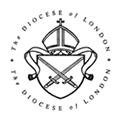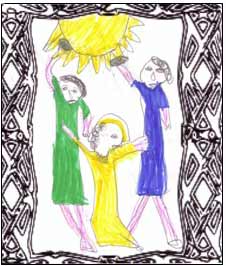History, mission and ministry
Engaging communities
A key message of Building on History has been that the past can be a resource for enabling churches to look outwards and contribute to the well-being and identity of local communities.
Engaging a local school
Katy Forsdyke, Head teacher of Christ Church School in Hampstead Village, Camden, describes a recent innovative history project.
The London Diocesan Board for Schools suggested that we get involved with the Building on History project in summer 2009. Following a meeting with the project team and the priest of Christ Church, we identified some interesting aspects of the history of the relationship between the church, school and wider community, and discussed ways in which the children could explore this.
We are fortunate that the parish church is next to the school and easily and safely accessible. We asked each class teacher to plan one lesson which made use of the church building in order to teach and learn something about the history of the church. We also made accessible all the school archives for careful use by teachers and children.
Each class from reception to year six carried out a learning activity, many over a series of lessons spent in the church, in spring 2010. Children recorded their findings in a variety of ways (pictures, writing, tables of data etc) and went on to interpret and respond in several different areas of curriculum (e.g. diary entries in literacy, graphs in maths, maps for geography etc.). Finally, each class contributed to a ‘sharing assembly’ later in the term, where they shared their work and their discoveries with the rest of the school.
Exploring diversity
Talking about religion in the East End of London History is an area of interest with significant potential to bring together a range of religious groups. While the ‘religious history’ of a community might have significant controversial aspects, a closer examination will probably reveal important examples of cooperation and good relations. Some faith communities, particularly those which have historically migrated from abroad, will have had similar or shared historical experiences. History can appear to be a non-threatening and ‘neutral’ subject, and it can form the basis for stimulating wider community interaction.
In September 2011 the project modelled this kind of discussion by organising a day workshop for community leaders and religious practitioners in the East End of London on the local history of religious diversity. We discussed the historical experiences of the Jewish, Muslim, Anglican, Black Majority Church, Baptist and Roman Catholic faith constituencies and reflected on the range of interactions between these groups. Local groups displayed exhibitions on places of worship, and religious and community leaders reflected on the value of history for contextualising religious diversity in the present. The Arts and Humanities Research Council has now agreed to fund Building on History: Religion in London, which during 2012 will work closely with a range of faith communities in the city (see p. 20).
What to do next?
If you would like to help churches in your diocese use history to engage with their local community you could encourage training and development for clergy and lay leaders on this theme. The following resources are also available:
- Example educational worksheets used in the Christ Church Hampstead primary school pilot project are available on the Building on History website – www.open.ac.uk/buildingonhistory
- Various groups provide ideas and resources for churches. See the websites of Divine Inspiration (www.divine-inspiration.org.uk) and the National Churches Trust (www.nationalchurchestrust.org), or for a different denominational perspective, visit Methodist Heritage (www.methodistheritage.org.uk).
- Organisations working primarily with other religious groups, such as the National Anglo-Jewish Heritage Trail (www.jtrails.org.uk), provide invaluable perspectives on history and the community.
Go to:






